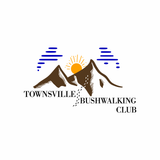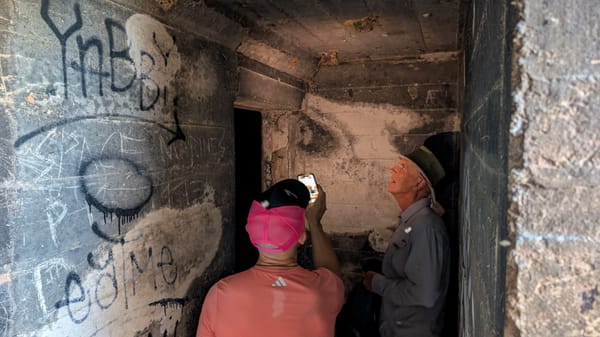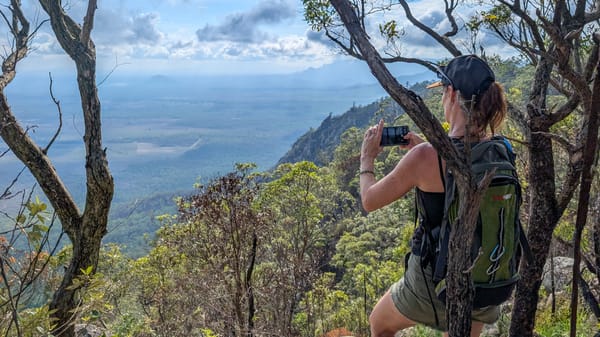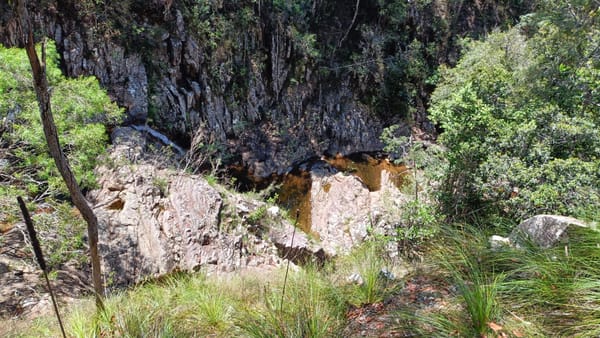Escape Magazine - December 1991
Escape Xmas 1991: Townsville Bushwalkers magazine with bird-watching tips for hikers, Eungella National Park camping, Blue Mountains spring walks, Kashmir’s Thajiwas Glacier and Vashisht hot springs, plus mango recipes. Trip reports, gear notes and club news for North Queensland bushwalkers.
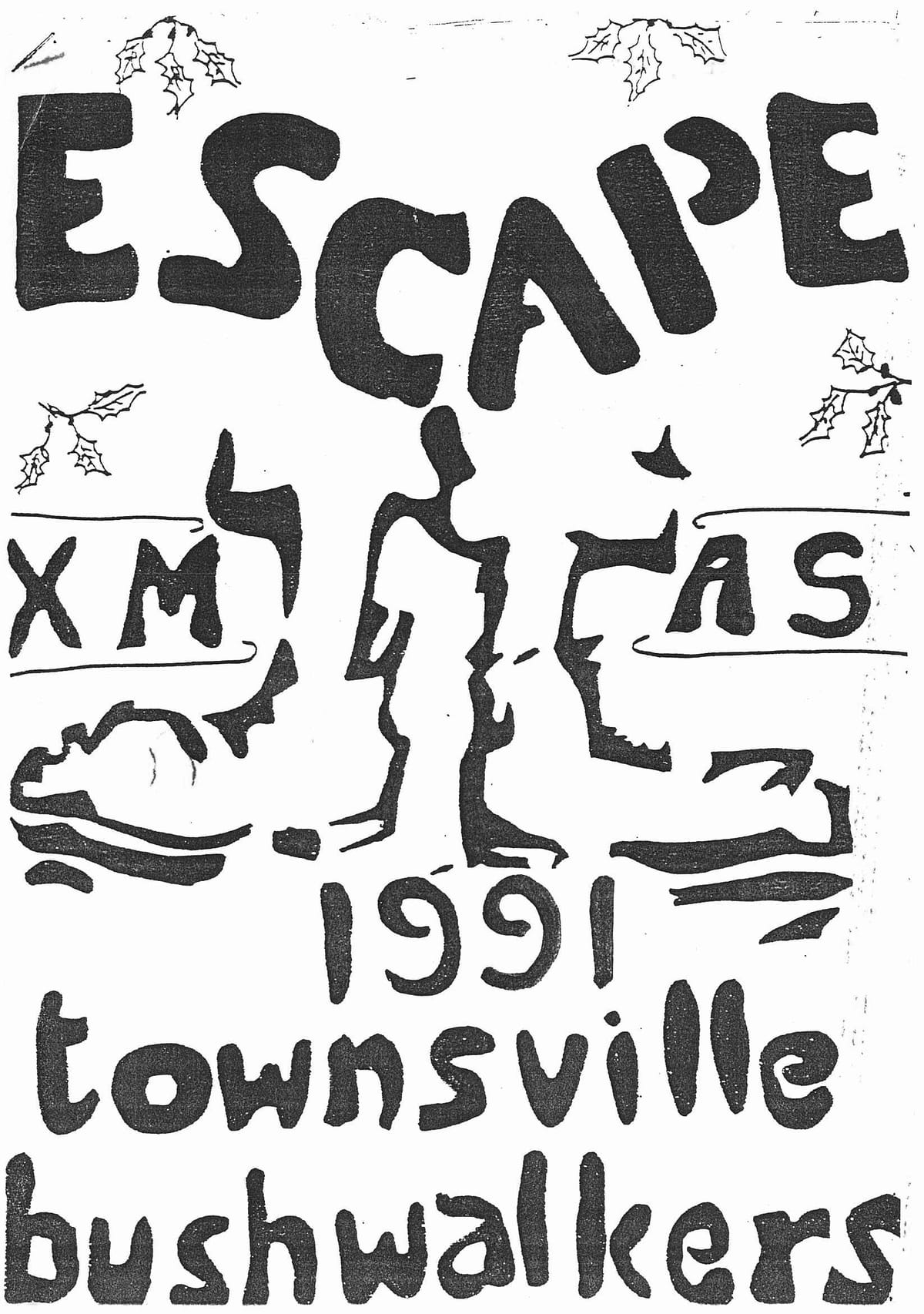
ESCAPE XMAS 1991
Townsville Bushwalkers
Editorial
Well, here it is at last! It's the Christmas edition of the long lost magazine. The year has flown so quickly, I haven't been able to fit many walks in, let alone produce many magazines. Anyway, I thought I'd better make an effort for those conscientious writers who contributed to this issue. Thanks to those who contributed and helped with the collating of the magazine. Hopefully, we will have more than two editions next year. Through the year, we have seen a couple of marriages, some great barbeques and even some good walks. Hope to see more of the latter two next year. Thanks to those who provided their places for barbeques. If you're going to the Xmas Weekend, I'll see you there. If not, have a great break. Some are lucky enough to be going away. We expect articles for the next year's magazines from those. And Val (from BBW) - yes, we are still alive up here!
Glynis

Mango Chutney
| 10 large green Mangoes | 6 Chillies |
| 1 kg. (2lbs) Sugar | 30g. (1oz) Garlic |
| 140g. (¼ lb) Dates | 1 tablesp. Salt |
| 140g. (¼ lb) Preserved Ginger | ¾ bottle Vinegar |
| 140g. (¼ lb) Sultanas |
Peel and slice Mangoes, salt, and cover with water overnight. Strain and wash. Boil all ingredients, except Sugar until tender. Add Sugar, and simmer another 2 hours. Bottle and seal.
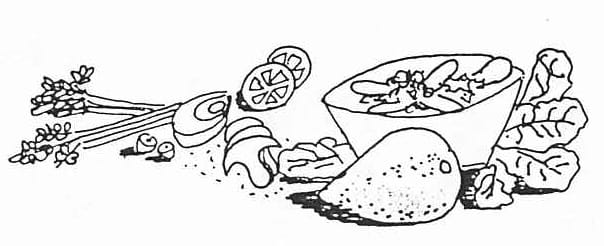
Stewed Desert Mango
| 10 almost ripe Mangoes | 2 cups Sugar |
| 2 cups Water | ½ cup Lemon Juice |
Place Mangoes and water in saucepan, and simmer until tender. Add Sugar, boil further 15 minutes. Add Lemon juice, and when cool, refrigerate. Serve with Custard or Ice Cream.
BIRD WATCHING FOR BUSHWALKERS
Ever wondered what a bird watcher would look like to a Martian?
They are a strange lot with even stranger habits! Wandering reverently around they clutch devoutly on black binoculars. Suddenly they stop, stand motionless and swiftly raise their binoculars.
How then does such odd behaviour fit with a group deftly striding through the Australian bush in search of cool swimming holes and spectacular scenery?
We bushwalkers know the Australian bush can offer enjoyment to people with all types of interests. Why, in our club I have met experienced walkers who actively seek out such oddities as orchids and old mine sites!! Bird watching is often condemned, however, as one of those activities which threatens to slow the pace.
But bird-watchers take heart. A little planning can make your day or weekend successful in both fields, and chances are you will also interest one of your fellow walkers.
Firstly choose your timing. Setting out is usually not the right time to want to look at birds. When everyone is fresh the main aim is to get a good start and set a fair pace.
Opportune times seem to be rest stops and lunch stops. Bright Scarlet Honeyeaters and Yellow Robins have 'checked out' our group while resting beside Yaminie Creek. On Puzzle a pair of Yellow-Faced Honeyeaters perched less than a meter away on paper barks and chirped while we waited for the billy to boil.
You may need the rest too. If so, perhaps now is a good time to start that fitness program you've been putting off. (Castle Hill usually takes about 30 minutes up and back.)
Short walks from the camp-site can prove fruitful. Amongst the birds which can be heard scratching around in the fallen leaves on the rainforest floor is the colourful Noisy Pitta and don't forget the vocal Chowchilla. This is often the best time to track down the booming of the Wompoo Pigeon too.
Like bird watchers themselves, birds seem to generally prefer the quieter areas. Roaring waterfalls are not on my list of favourite birding spots. They are lovely but you can't hear the birds!
Birds songs are a giveaway. While walking we seldom have the luxury of stealing through the bush to sneak up on a singer. Songs make birds easy to find. Of course knowing what bird makes the song and its likely habitat helps. Once I spent 20 minutes looking in the grass for a very vocal Zitting Cisticola only to discover that one of the variations in the song meant the bird was right above my head and easy to see.
Becoming familiar with bird songs is not difficult. Two tapes are locally available: Bird Calls of Eastern Australia by Len Gillard and Bird Calls of Tropical Eastern Australia by Andree Griffin and RJ Swaby. Alternately experience is a good teacher.
Getting a good look at the birds usually requires a pair of binoculars. The bigger binoculars are often impractical for use on bush-walks. Not only can they weigh a tonne but chances are the bird has probably long gone by the time you get them out of your pack.
Wearing large binoculars may also make clambering over rocks difficult and you need to consider the damage the rocks will inflict on your good binoculars. Most binocular manufacturers include compact models in their range. Some, like the Tascos, are even available in local outdoor supply shops. They are small and unobtrusive, and fold to fit into your breast pocket. That way they are not dangling in your way or inhibiting your climbing but are there at the ready should you spot something.
Identification can be difficult especially with LBJs (Little Brown Jobs). Many heads can help and knowing bird calls always assists. Most keen twitchers take a notebook and pen especially if they are not taking a field guide. This is one compromise I can't bring myself to make. According to Murphy, the day I leave my field guide at home would be the day the chance in a lifetime would show up. The lightest field guide I have come across weighs just 440 grams. Perhaps the best bet is sharing one with a fellow enthusiast. Then you only have to argue about which author's to take!
There is much consternation about the relative values of the three main field guides amongst bird-watching diehards.
Graham Pizzey's field guide weighs in at 720 grams, gives good background text, and points out the identifying features. His illustrations and location maps are found at separate places in the text which can be frustrating at times.
Peter, Pat and Raoul Slater's field guide weighs in at 440 grams. It has text, photos and map on the same page. However it does not point out identifying features and there is less information in the text.
Ken Simpson and Nicolas Day have a field guide version of their large reference volume. It weighs 780 grams and has all the details on the same page including space for recording sightings. Unfortunately so many items has meant the text is brief.
Whichever you decide you're bound to get alot of enjoyment out of seeing and identifying new birds in the bush. Somehow the remoteness of the areas adds to the experience and makes sightings more meaningful.
Happy twitching!
Gillian Lee
A SHORT WALK IN THE HIMACHAL PRADESH
Vashisht is a tiny village about 3km north of Manali. It is known for its natural hot springs where one can soak away the tiredness from a long trek or from a typical Indian bus ride. The scenery around Manali reminded me of Switzerland with the steep, snow-capped mountains and pine trees.
On this fine September morning, we crossed the picturesque Beas River and walked up the road which followed the river. There were quite a number of people walking along the road. All the way, we had picture postcard views of the scenic mountainous landscape. At one stage, another river or branch comes into the main river. We then left the road to climb up a track. It followed a small stream, then crossed over it to the other side. The track passed by some apple trees full of fruit and then led up to a bath house through which the hot springs flow. The view from here is worth stopping for. We decided to have a soak in the hot springs. For 15 rupees (less than $1) and 1 rupee each for a towel, we got a private bath for 20 minutes. We filled up the small pool and had a lovely relaxing soak. It was certainly worth the stop. We then continued on up to the village of Vashisht. Here, there are some lovely wooden houses with thatched rooves. The animals seem to live in the houses with the people. The people were friendly as they trudged uphill carrying basketloads of produce or logs.
It had been a pleasant morning. It was certainly a good introduction to the scenery which we would get to see beyond Manali on our way to Leh - over the Tibetan Plateau and the second highest pass in the world.
Glynis
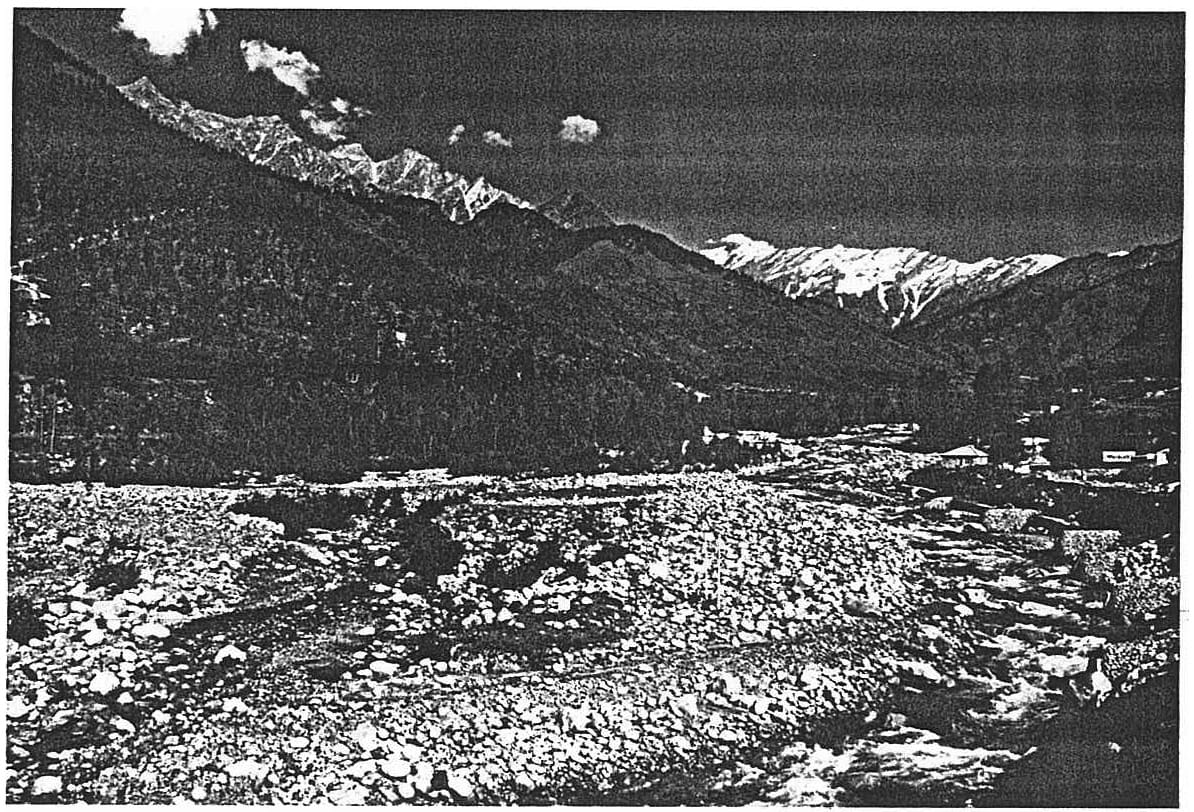
KASHMIR CAPERS
It was our third day in Srinagar and we had planned a trip to the Thajiwas glacier, a short walk from Sonamarg on the Srinagar to Leh road. There were five of us altogether - Henry, his daughter, Tamsin and her friend Katie, from England and Glenn and I. The taxi driver was waiting for us, so at about 8.00am we took the shikara boat ride across from our houseboat to shore.
The drive up to Sonamarg was very picturesque, with mountains rising up steeply, and blue-white streams winding their way through the valleys. The brilliant-white patches of ice which had settled in the valleys contrasted with the lush greenery of the mountains. Waterfalls dotted the landscape and herds of cattle and flocks of sheep wandered along the road. There were soldiers everywhere who stopped us several times, searching the car and our bags and checking our passports. The worst thing about the trip was the hundreds of trucks spewing forth carbon-monoxide. They were taking supplies to Leh before the snow closed the road.
Sonamarg is on the border of Kashmir and Ladakh so there was a large army camp there. Once off the main road and heading towards the glacier, we were virtually on our own. The walk to the glacier was very pleasant. The surrounding mountains seemed to rise even more steeply now that we were closer to them. The air was cool, but not cold, despite the snow on the mountains and the ice on the sides of the mountains. There were shepherd families living in tents in the valley. Their sheep and horses were grazing nearby.
The going was easy at first, but towards the end, it was quite steep. However, the breathtaking scenery made up for this. The shepherds were on the other side of the stream and the going looked much easier there. However, we were unable to cross the stream. We went as far as the bottom of the moraine, and could see horses grazing further up on the other side. The walk only took about an hour, although much longer treks in the area can be arranged by houseboat owners if you wish. As we were limited by time and wanted to go to Leh, we did not do any trekking. However, we did find out later that trekking is cheaper in Kashmir than from Manali in the Himachal Pradesh or Leh in Ladakh. This is probably because fewer tourists are going to Kashmir because of the political situation. However, I thought that if I were to choose between these areas for trekking, I would choose Kashmir.
Glynis
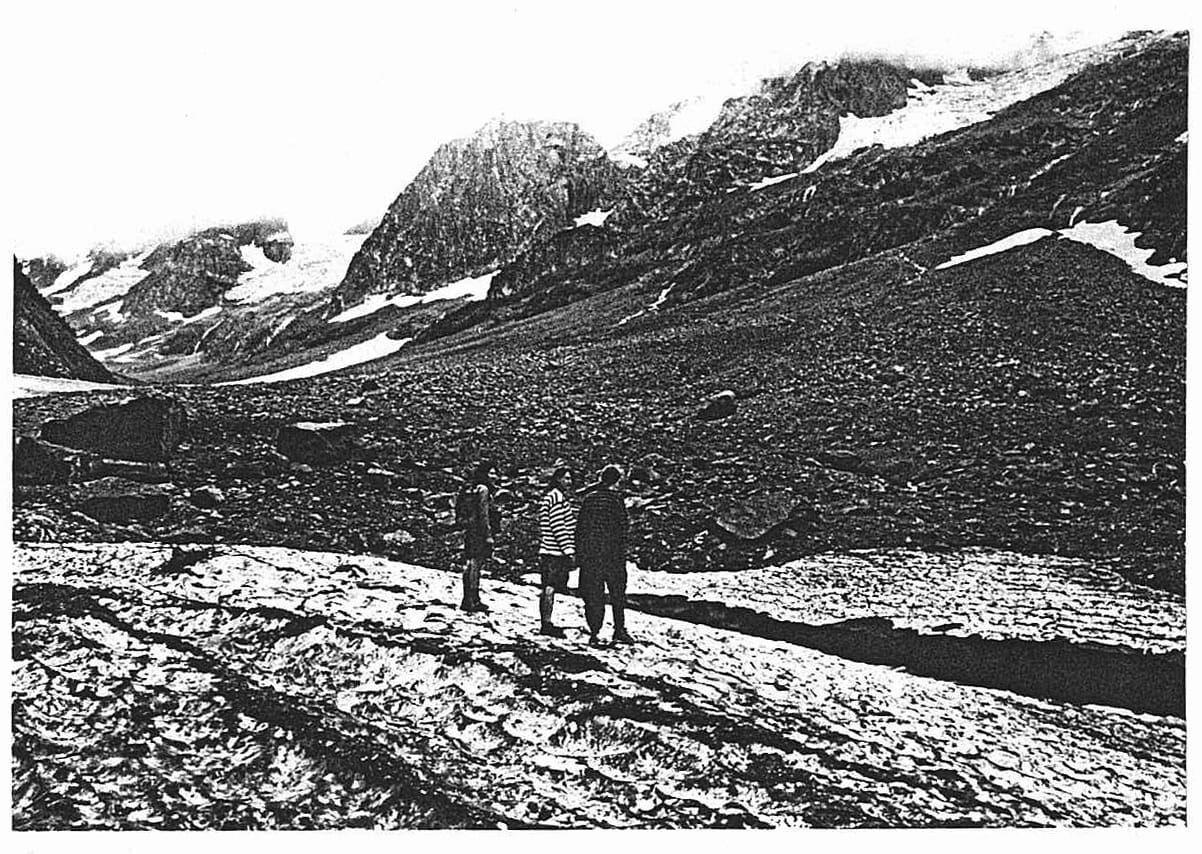
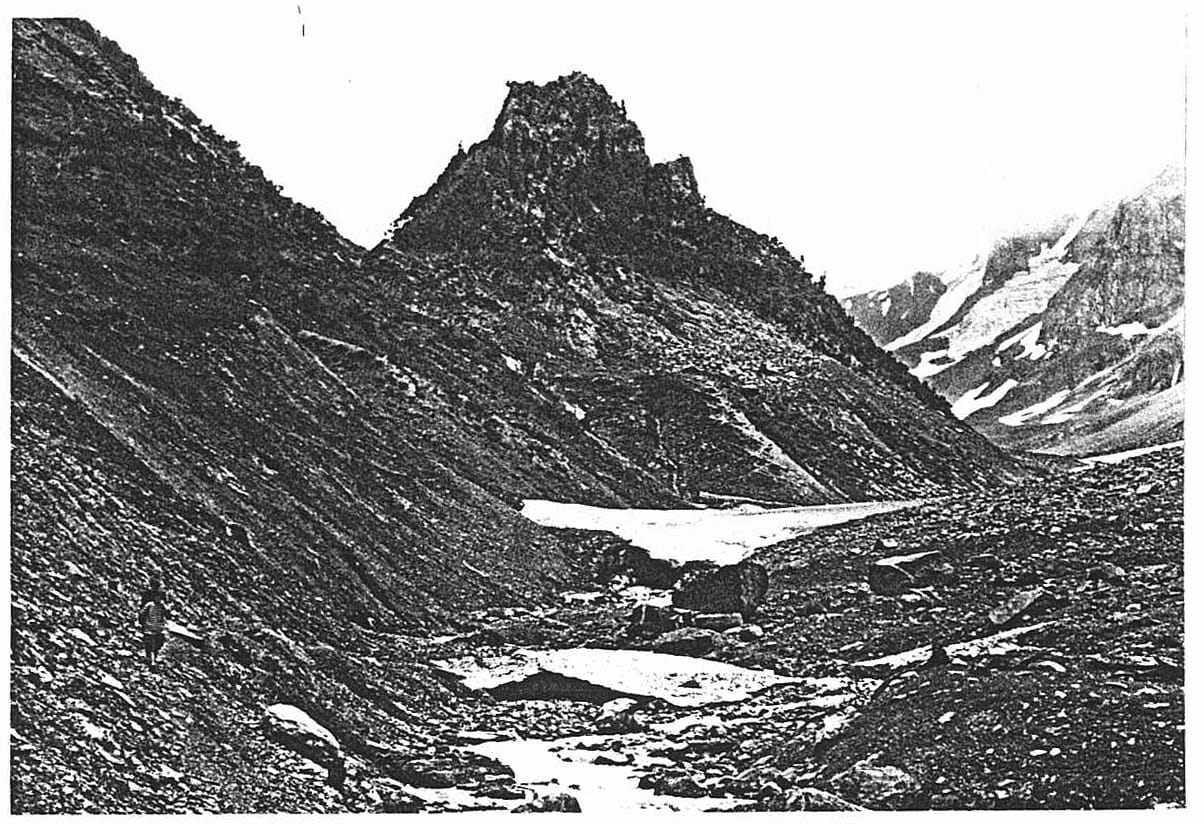
THAJIWAS GLACIER
EUNGELLA NATIONAL PARK
Not having had a holiday for over a year, we had to break out - but only one week was available. So Jenny and I went for a week to Eungella - actually, 6 days to be exact, and in hindsight, that was just enough to do the popular walking tracks at leisure. Two days travelling there and back and four days of easy walks.
Eungella is a big National Park inland from Mackay, but only a small part is accessible to the public. It is actually a small fringe at the park where most of the walks are. Central to the walks is the Broken River Camping area where we camped. You approach Eungella by driving through the Pioneer Valley and eventually going up the Range with Eungella at the top. About 6 km further is the Broken River Crossing with the camping ground and Ranger Station.
The first walk we did was from halfway between Broken River and Eungella (Sky Windows picnic area) to Eungella with nice views of the Pioneer Valley. A short walk indeed, it gave us plenty of time to check out the arts and craft shop and Eungella Lodge etc. The problem with almost all the walks at Eungella is that you have to walk back on the same track or on the bitumen road to where you started from.
On the second day we walked from the camping ground to the picnic area - (Palm Walk Track) - with more of the same views and, in fact, both walks can easily be done in one day.
On the third day, we went to Finch Hatton Gorge at a different location in the park. Down the Range, back to Finch Hatton, then follow the signs to the Gorge. A walking track follows a creek up to a waterfall. A nice walk with a nice swim-hole at the end. Not to be missed when visiting the Park.
The fourth walk we did, I feel was the nicest (also the longest). It followed the Broken River all the way, with nice serene pools surrounded with rainforest and lots of bird-life (we saw two Azure kingfishers). A most enjoyable walk.
At night there is the compulsory platypus watching. (Yes, we did spot it) - but do it at dusk. Walk a bit beyond the watching platform to a more secluded spot. We also saw an Azure kingfisher darting into the water several times before flying off.
The time was up and we had to go back home. Eungella is a nice park to visit if you want to break out for a week or even a long weekend. (Do book the camping ground in advance). The walks are very nice, but not challenging and a four day stay is more than plenty. Do try the apple strudel at the Rainforest Cafe and look at the nice wood products and artefacts.
Eungella is great to kill a few days.
BEN
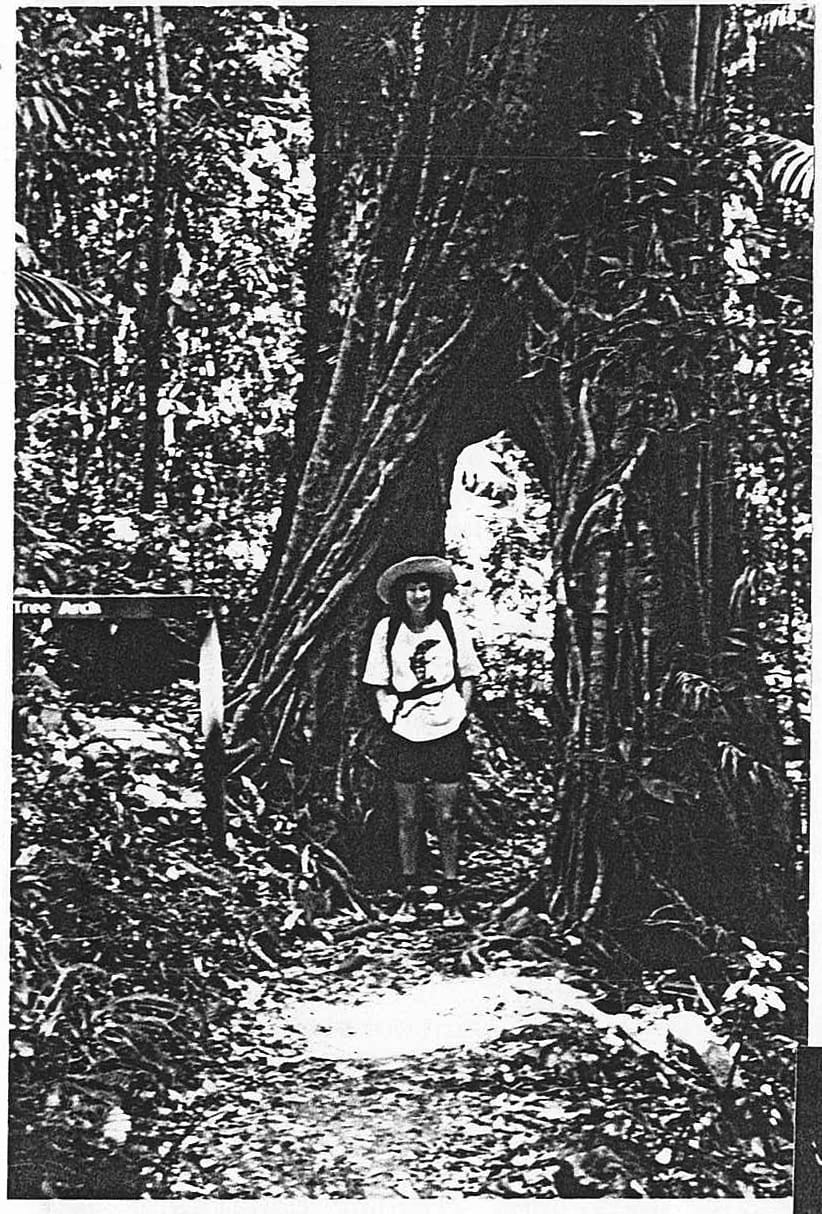
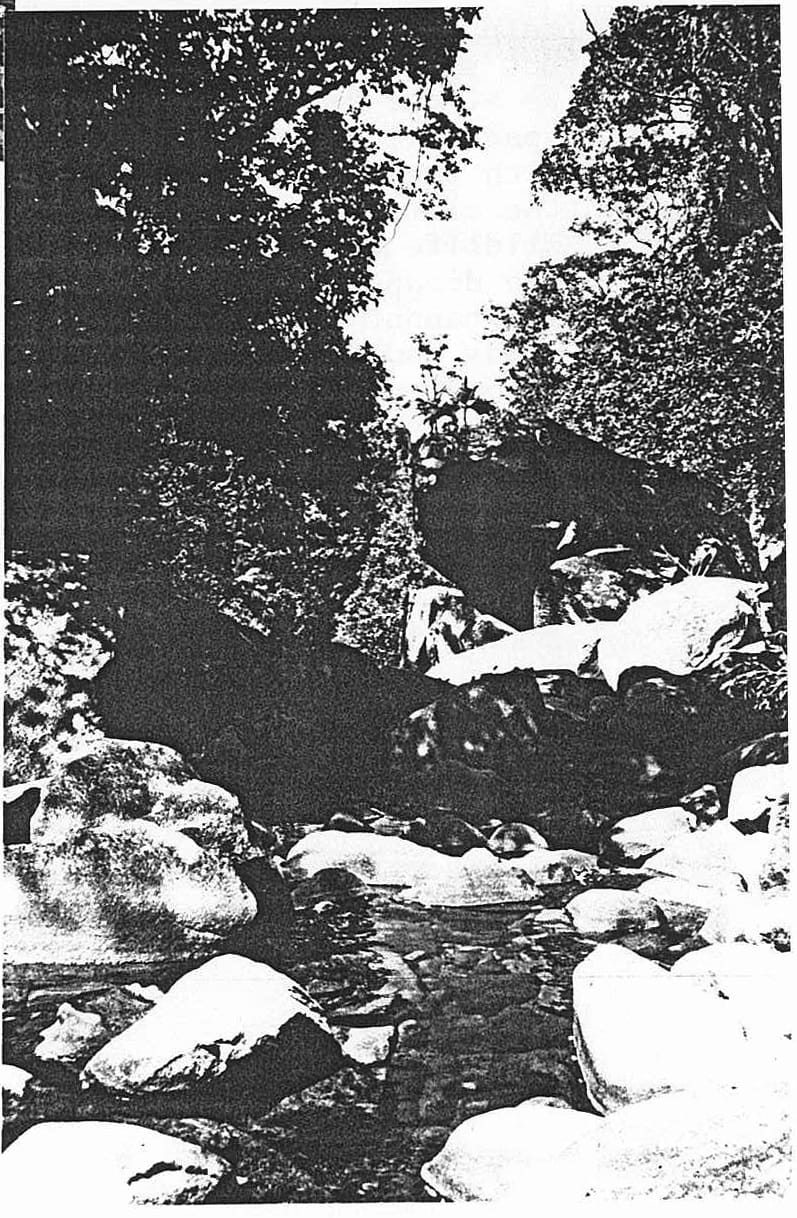
SPRINGTIME WALKING in the BLUE MOUNTAINS.
OCTOBER 1991.
Two Bushwalking friends from Sydney and I, travelled up the Great Western Highway escaping Sydney's traffic, Suburbia and crowds, to begin a half day walk in the Blue Mountains. The Valley of the Waters/Wentworth Pass/ National Pass Tracks are graded as Hard by the National Parks and Wildlife Service Brochures picked up later from the information office overlooking the Three Sister Mountains. But, since we were walking in a pleasant temperature of 18 degrees centagrade, the steep climbs had steps, and the slippery cliff edges had wire hand rails, it seemed like an afternoon stroll compared to some recent walks I'd encountered with the Townsville Bushwalkers.
There was time to look at each Warratah in bloom beside the track and I kept staring in amazement at the many colours of Wildflowers in bloom.There were purple,blue,white,pink, yellow,orange and mauve wildflowers in every direction. Crimson Rosellas called in their distinct whistle and we sighted several as we climbed downinto the Valley of the Waters. The Wentworth Pass track had sweeping views across the valley not unlike the scenery at the Grand Canyon.
As we walked under the cliff faces towards Wentworth Falls- rain trickled down from above. However, this was not rain but spray from numerous waterfalls fed by recent rains. We almost crawled along parts of this cliff track as the space allowed for walking was approximately 1 metre. With the recent rains, the stones underfoot sloping towards the cliff edge were extremely slippery, but Parks and Wildlife had thoughtfully constructed a wire handrail! One disappointing reality of walking in the Blue Mts. is you cannot drink the water from all streams. Pollution from the roads and townships constructed on the ridges,flows off down into the streams. If it is unfit for human consumption,then one questions how it will ultimately sustain the bird and animal life protected in this region.
The variety of plant life was equally amazing as the changes in scenery. Palms,gums,acacias,blackboys, and the ever present BANKSIA dotted the whole area. The Banksias had all finished flowering and were displaying the blackened core, with some seedpods already opened.
It is a very beautiful area with a whole network of bushwalking tracks inviting further exploration.
Jenny.
